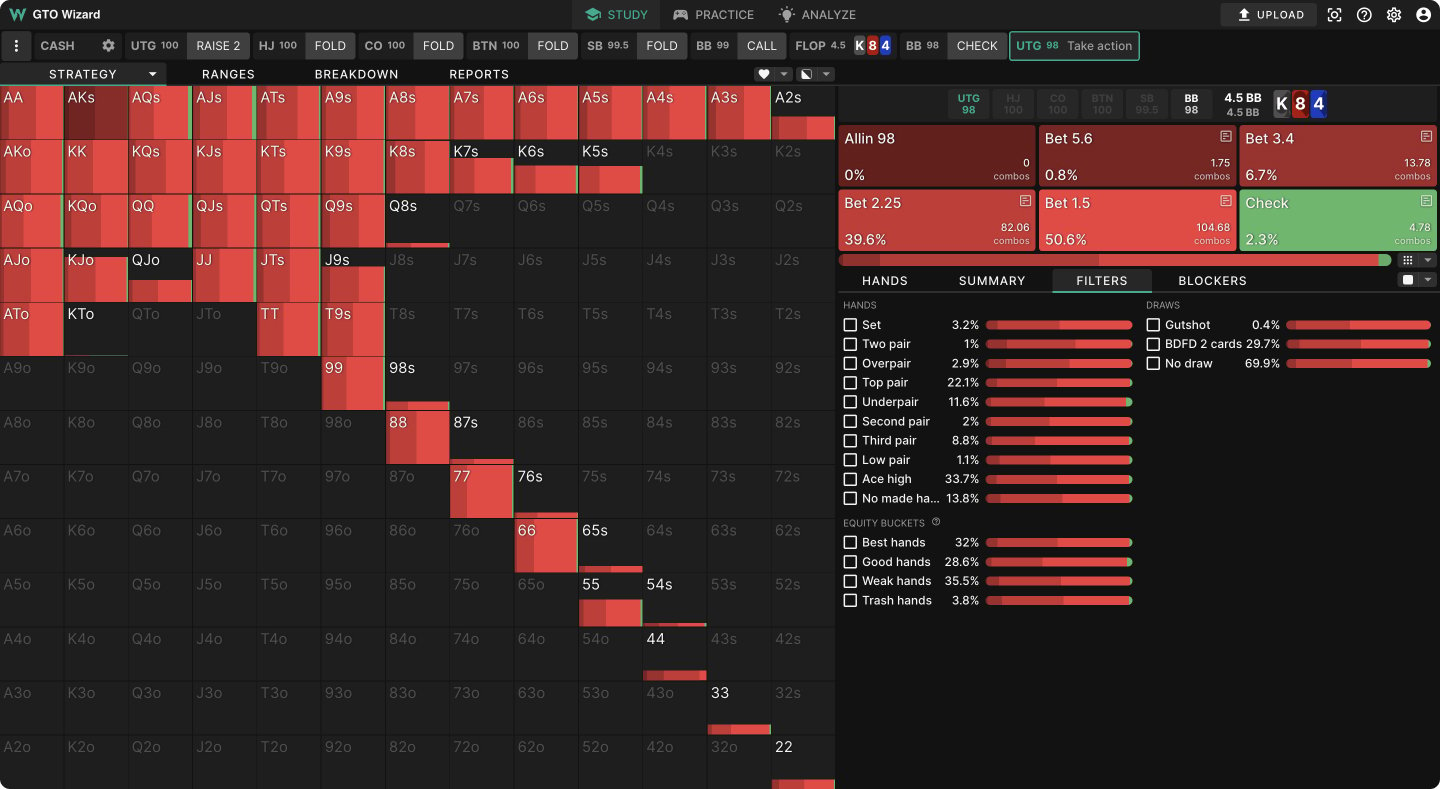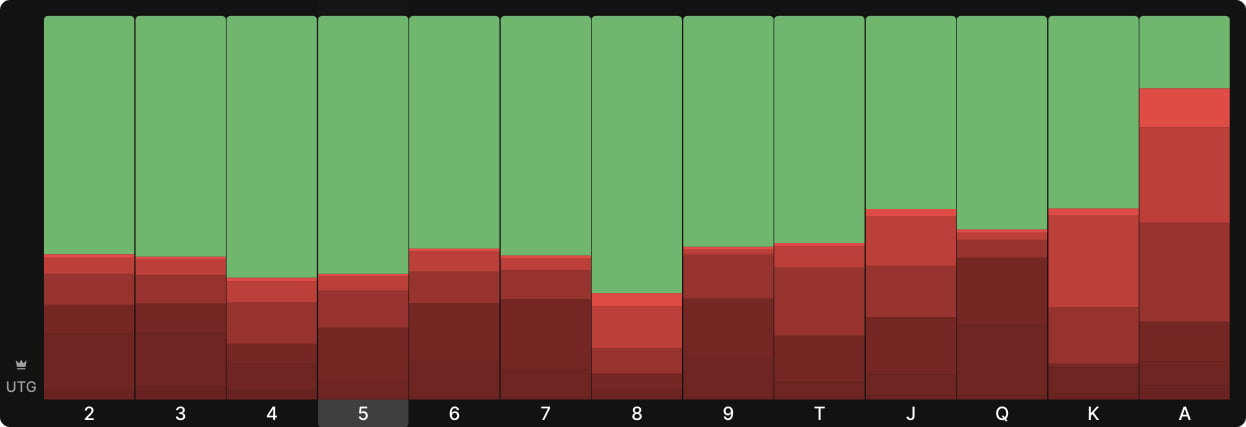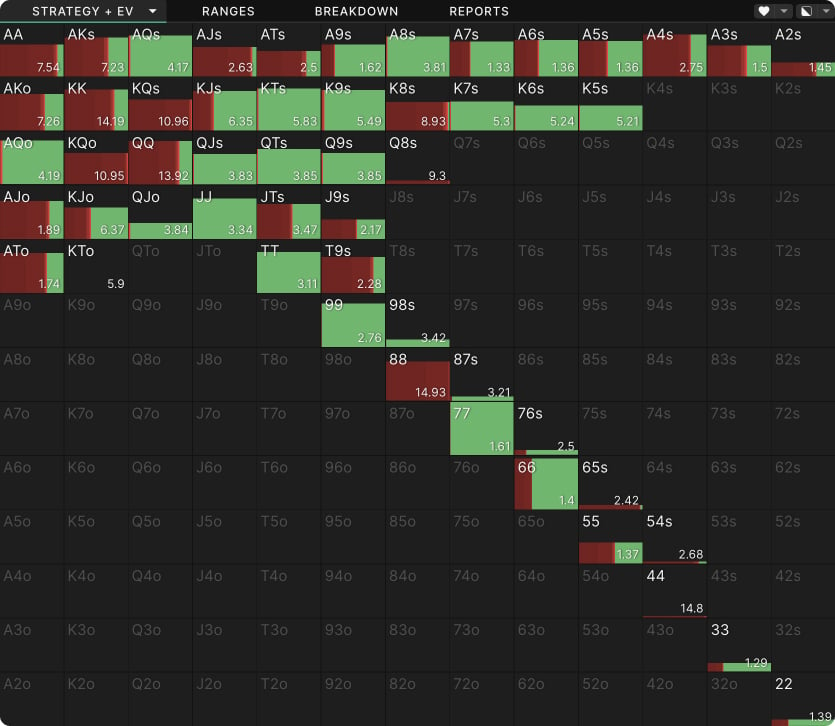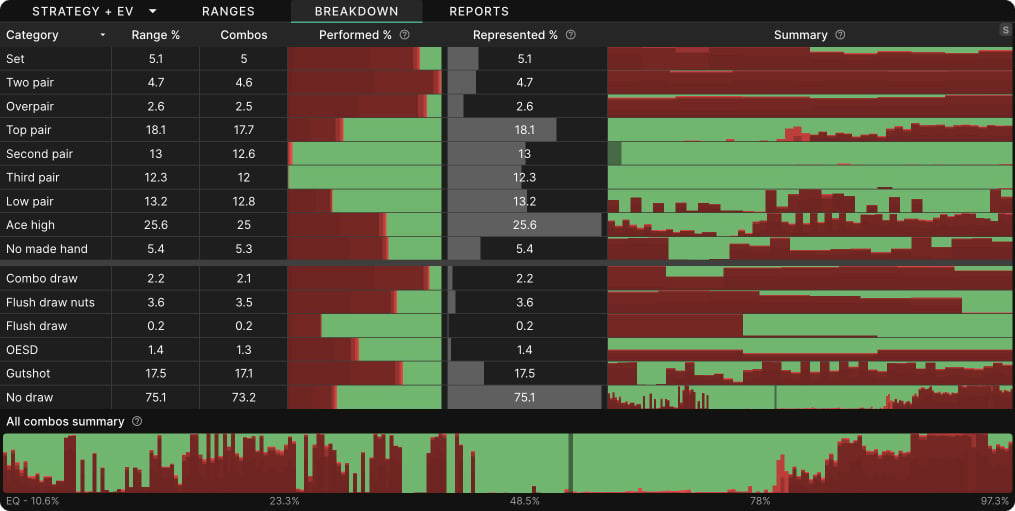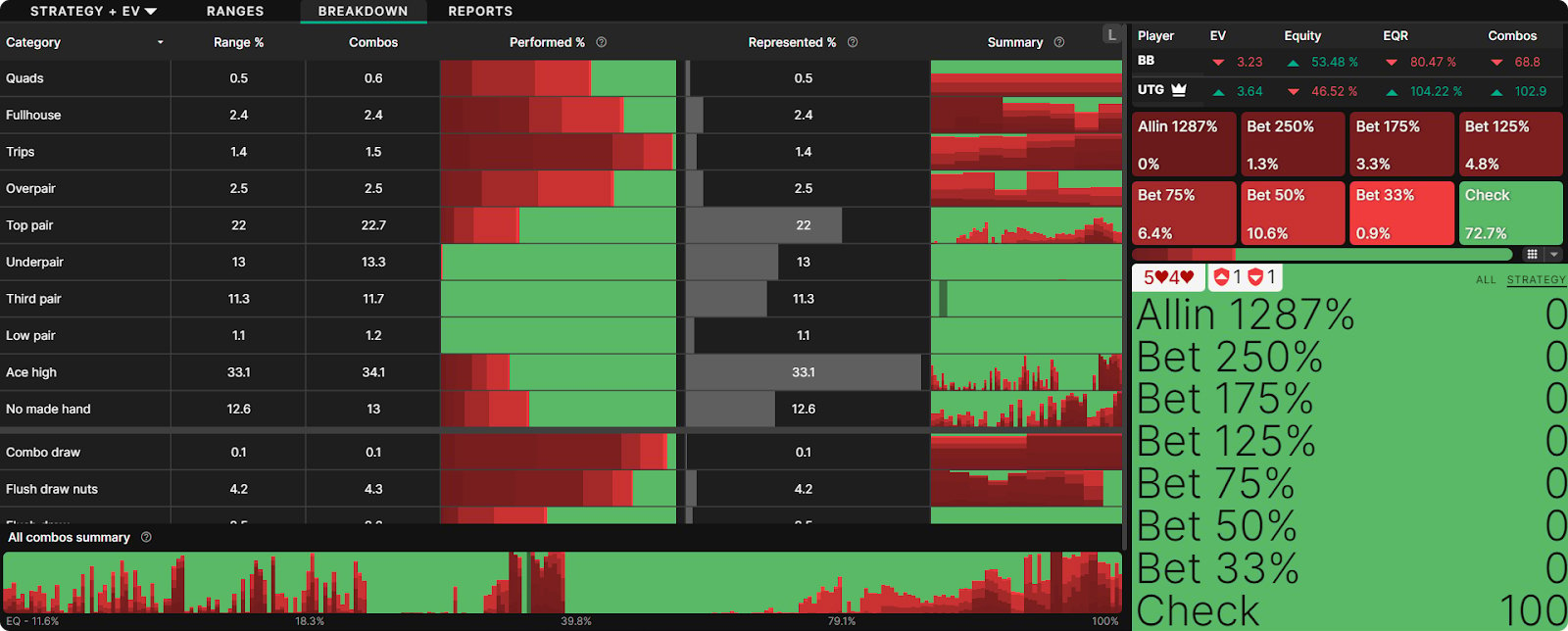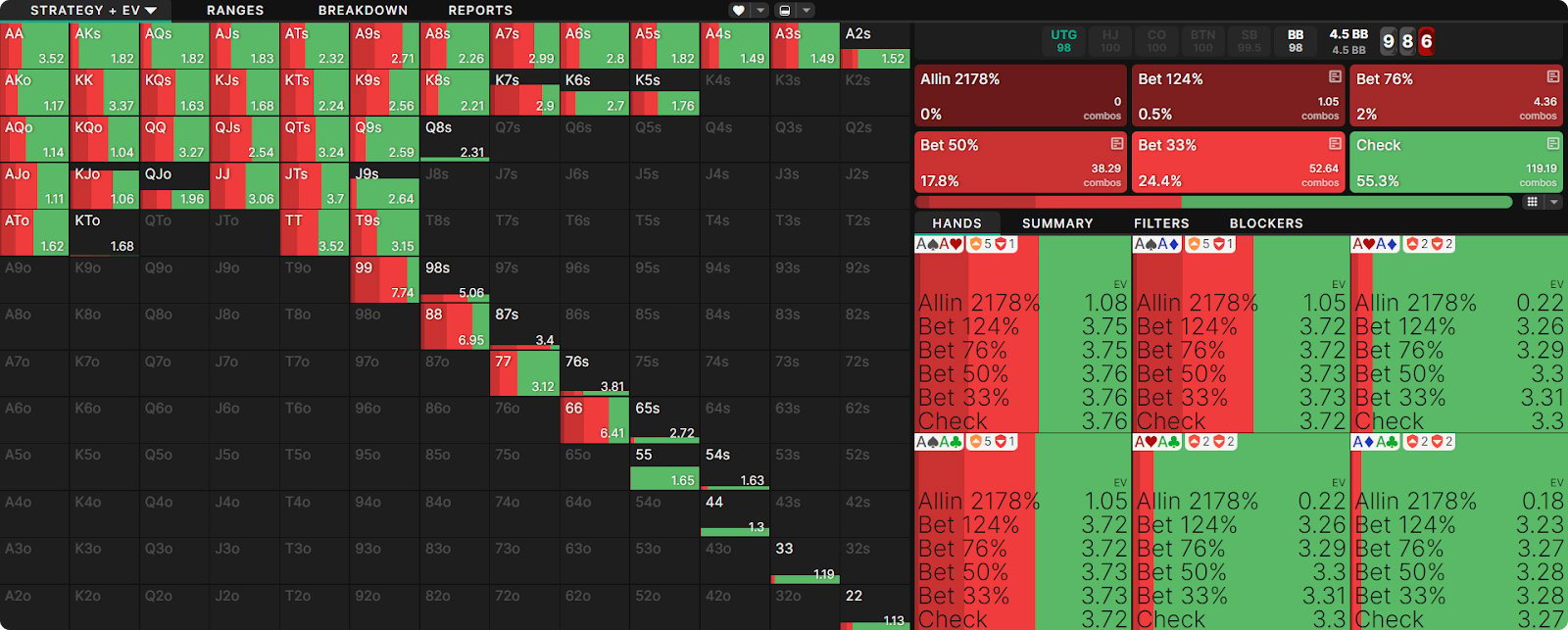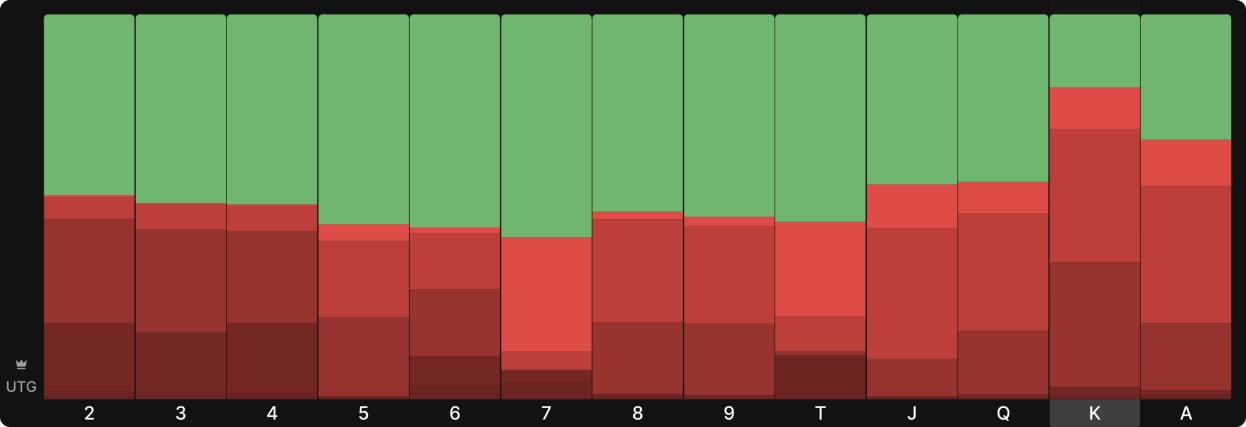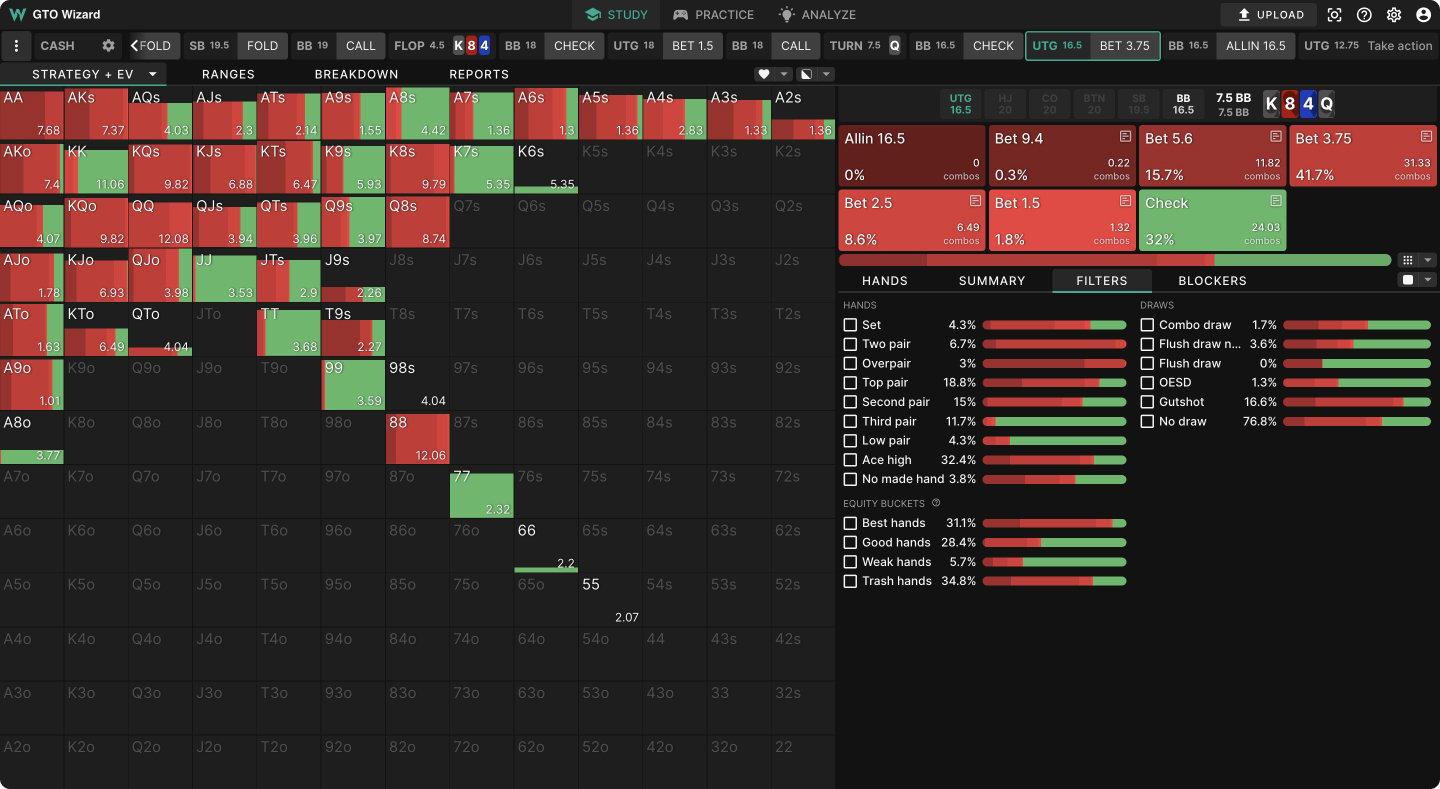Principles of Turn Strategy

What Makes the Turn Unique?
Several factors distinguish the turn from other betting streets:
- Hand values are more static than on the flop. When you are ahead, you are more likely to remain ahead, and when you are behind, you are less likely to draw out.
- Hand values are more dynamic than on the river. With one card to come, hands can still change value. This presents a dilemma: bet again to deny equity and risk getting raised, or check and risk a scary river.
- Lower SPR. If there was action on the flop, then the effective stack will be much shallower on the turn. The turn is often the point where players decide whether to play for stacks.
- Limited betting opportunities. Only one betting street remains after the turn, making slowplaying a riskier proposition than it was on the flop. This is especially true if there was no action on the flop.
As the pot gets larger and betting opportunities fewer, players are more compelled to play according to the incentives of their hand class
This all adds up to a street that plays more “honestly” than the flop. As the pot gets larger and betting opportunities fewer, players are more compelled to play according to the incentives of their hand class, even at the risk of revealing what that hand class is:
- With less to gain from protection, medium-strength hands have more incentive to check and try for a cheap showdown.
- Strong hands have more incentive to grow the pot with big bets, as they will have only one more opportunity to do so. Weak hands either commit to a big bluff or give up. There is less room to “push equity” with small bets as often happens on the flop.
- Draws have the trickiest decisions and often end up indifferent at equilibrium. On the one hand, semi-bluffing is appealing because they value fold equity more than ever. However, the risk of getting raised off their own equity offers a competing incentive to check.
How Turn Play Differs From Flop Play
Many players struggle on the turn because of misguided attempts to apply heuristics learned from flop play. The flop is the more commonly encountered betting street and so more familiar. There are also far fewer flop scenarios than turn scenarios, which makes them easier to conceptualize and study. But as we have seen, turn scenarios entail different range dynamics and incentives, which can cause optimal strategy to look quite different.
This K♠ 8♥ 4♦ UTG v BB 100BB NL50 cash game scenario is a good example of an undifferentiated flop strategy. There’s some splitting between the 33% and 50% bet sizes, but UTG basically just bets small with their entire range.
After BB checks and calls a 33% pot continuation bet: however, that strategy changes dramatically. On most turns, check is UTG’s most common action. When they don’t check, they mostly overbet ✋💸
Several factors contribute to this contrast. On the flop, UTG enjoyed a large range advantage which enabled even their marginal hands to bet without great fear of running into better. They could include stronger hands in this small bet range because, with two streets still to play, there would be opportunities to build a big pot later. And with two cards to come and plenty of money behind, they could bet draws planning to call a check-raise if necessary.
All that changes on the turn. BB has folded away their equity disadvantage and now has a stronger range on most turns. This means UTG can no longer bet with impunity. Their medium-strength hands have less incentive to bet: they already got some protection on the flop, and now, with just one card to come, there is less danger of getting drawn out on. UTG’s strong hands need to start aggressively growing the pot to make up for that small flop bet 💪
That means they can also bet big with weak hands for maximum fold equity. They bet flush draws consistently, but more marginal draws, along with marginal made hands, make up the bulk of the checking range. These hands are more at risk for getting blown off their equity and less excited about growing a large pot, as fewer river cards make them the functional nuts.
Here’s that same K♠ 8♥ 4♦ flop after a 33% pot continuation bet and a Qs turn. Pay particular attention to the pure strategies, the hands that show a strict preference for either betting or checking:
After betting small on the flop with their entire range, UTG bets barely 40% of their range on this turn, always for an amount larger > than pot 💰
UTG shows a clear preference for checking one-pair hands despite the draws. Third pair, second pair, and even most top pair strictly check. Meanwhile, two-pair and sets almost exclusively bet, with the only exceptions coming from KK and QQ. These hands both block the hands most likely to pay off big bets and are particularly resilient against getting drawn out on, as some spade rivers will make them a full house.
Draws are trickier to categorize because their incentives are less clear. Flush draws with a pair or even just an Ace have some unimproved showdown value and so less incentive to bluff. But straight draws have bad blocking effects on BB’s folding range, which is heavy on pocket pairs like JJ, TT, and 99.
We see the same pattern even on a very different turn card, the 8♠, which is among the worst for UTG:
UTG checks more hands overall, even after accounting for the fact that BB’s optimal strategy involves donk betting a range that is heavy on their stronger hands. When they do bet, it’s usually for a smaller size, with half pot being most common. Still, the same pattern is there: strong hands consistently bet, with the only exception being full houses and quads which have both bad blocking effects and little risk of getting drawn out on. Medium strength hands, including most top pair, consistently check. Draws have mixed incentives, with flush draws betting more consistently than straight draws.
What About Less Favorable Boards? 🤔
The K84 flop is an especially good one for UTG, which is why they can bet their entire range, but the same principles apply even after they split their range by betting less frequently on less favorable flops. On 9♠ 8♠ 6♥, for example, UTG bets less than half their range, still preferring a small size:
It’s harder to generalize across turns on this board because the texture can change in so many ways, with overcards, board pairs, flush draws, and straight draws all possible. But with a few exceptions, we do see lower betting frequencies and bigger bet sizes, indicating more polar ranges:
The notable exceptions here are the very best and worst cards for UTG. An offsuit 7 is the worst, as BB has more 7x in their range. Without the nuts advantage, UTG can’t pressure BB’s medium-strength hands with big, polar bets and so uses smaller bets. Ace and King rivers, on the other hand, help UTG more often than they do BB, so UTG bets these at a higher frequency.
What About Shallower Stacks?
Although solver outputs can look quite different with shallower stacks, the same principles apply: strong hands grow the pot 📈 medium strength hands pot control, weak hands bluff or give up, and draws navigate between fold equity and equity realization. What changes is the composition of these classes and the relative importance of competing incentives
- The threshold for what counts as a strong hand goes down, as less money is at risk when all in.
- Bet sizes are smaller because big bets are not necessary to get stacks in by the river.
- Draws are less valuable with less money behind to wager on the river.
Here is the same K♠ 8♥ 4♦ Q♠ scenario but with 20bb effective stacks. What changes do you notice?
- UTG’s most common bet size is 50% pot rather than an overbet. This is because 50% pot will still enable them to shove rivers comfortably when they wish to do so.
- Top pair bets more often. With only 20BB, hands like KT and KJ are strong enough to play for stacks and so no longer check for pot control.
- Second pair bets more often. Although these hands mostly fold if raised, UTG’s smaller bet size allows for more thin value/protection bets.
- Draws bet less often. The potential reward for rivering the nuts is much lower, which makes draws less valuable. They are also at greater risk of getting raised.
- Top set slowplays more often. The main risk of slowplaying the nuts is failing to grow the pot. When the pot is already large relative to the effective stack, there is more incentive to slowplay when you block the hands most likely to pay you off.
- UTG bets more often. The smaller bet size allows for a less polar betting range, so weaker hands make the cut. UTG still emphasizes checking the middle of their range, but the middle is smaller because of the smaller bet size.
Conclusion
Across a variety of turn scenarios, we see the same patterns emerge: hand values are more clearly defined on the turn than on the flop, they have more clear incentives, and they pursue those incentives more explicitly. Mistakes on the turn often arise from failing to appreciate how those incentives differ from what they were on the flop, and sometimes from what they will be on the river as well.
Author
Andrew Brokos
Andrew Brokos has been a professional poker player, coach, and author for over 15 years. He co-hosts the Thinking Poker Podcast and is the author of the Play Optimal Poker books, among others.
